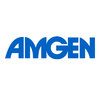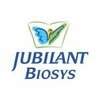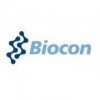Filter interviews by
Jubilant Biosys Research Associate Interview Questions and Answers
Jubilant Biosys Research Associate Interview Experiences
12 interviews found
(1 Question)
- Q1. Conversation reaction
Interview Preparation Tips
I appeared for an interview before Feb 2024.
(4 Questions)
- Q1. Basic for freshers
- Q2. Reactions and mechanism
- Q3. NMR prediction and analysis
- Q4. Basic conversion synthesis and oxidizing and reducing agent
(1 Question)
- Q1. Salary and benefits

(4 Questions)
- Q1. How to handle and quench pyrophoric chemical in reaction.
- Q2. Name reactions based on palladium chemistry and copper chemistry
- Q3. Different oxidising and reducing agent for ester reduction,cyano reduction, alchol oxidation
- Ans.
Different oxidising and reducing agents used for ester reduction, cyano reduction, and alcohol oxidation.
Ester reduction: Lithium aluminum hydride (LiAlH4), sodium borohydride (NaBH4), diisobutylaluminum hydride (DIBAL-H)
Cyano reduction: Lithium aluminum hydride (LiAlH4), sodium borohydride (NaBH4)
Alcohol oxidation: Chromium trioxide (CrO3), potassium permanganate (KMnO4), Jones reagent (CrO3/H2SO4)
- Q4. Indole, oxazole and isoxazole synthesis route
Interview Preparation Tips
I appeared for an interview before Mar 2024, where I was asked the following questions.
- Q1. What is a Suzuki coupling?
- Q2. What are the NMR values for pyridine?
I applied via Company Website and was interviewed before Feb 2023. There was 1 interview round.
(3 Questions)
- Q1. Tell me about yourself?
- Q2. How many years of experience do you have in contract research?
- Q3. What kind of skill you know?
- Ans.
I possess strong analytical, communication, and technical skills, essential for conducting research and collaborating effectively.
Analytical Skills: Proficient in data analysis using tools like R and Python, demonstrated by my thesis on statistical modeling.
Communication: Experienced in presenting research findings at conferences, ensuring clarity and engagement with diverse audiences.
Technical Skills: Familiar with la...
Interview Preparation Tips
I applied via Campus Placement and was interviewed before May 2023. There were 2 interview rounds.
(1 Question)
- Q1. Tell me the name of any 5 oxidising reagents.??
- Ans.
Some common oxidising reagents include potassium permanganate, hydrogen peroxide, chromic acid, ozone, and nitric acid.
Potassium permanganate
Hydrogen peroxide
Chromic acid
Ozone
Nitric acid
(1 Question)
- Q1. Tell me your future goal??
Interview Preparation Tips
- MSc organic chemistry syllabus
I applied via Company Website and was interviewed in Sep 2022. There were 4 interview rounds.

(1 Question)
- Q1. Introduce yourself and why I'm hairing you
- Ans.
I am a dedicated researcher with a strong background in data analysis and a passion for advancing scientific knowledge.
Educational Background: I hold a Master's degree in Biology, where I focused on molecular genetics.
Research Experience: I have worked on a project analyzing gene expression in cancer cells, which resulted in a publication.
Technical Skills: Proficient in statistical software like R and Python for data a...
(1 Question)
- Q1. Research work done in m.pharm
(1 Question)
- Q1. Final selection is required
Interview Preparation Tips
I applied via Recruitment Consulltant and was interviewed before Sep 2022. There were 2 interview rounds.

(7 Questions)
- Q1. Named reactions , functional froup interconversion, analytical data interpretations, retrosynthetic analysis, scheme design of target molecule.
- Q2. Nmr characterization, FG Interconversion, awareness of pyrophoric reagents.
- Q3. LCMS halogens peakspattern .
- Q4. Nmr data interpretation.
- Q5. Functional group intercinversion, retrosynthesis.
- Q6. C- C bond formation , C-N bond formation.
- Q7. Reaction mechanisms
Interview Preparation Tips
Research Associate Interview Questions & Answers
posted on 16 Nov 2023
I applied via Naukri.com and was interviewed before Nov 2022. There were 3 interview rounds.

(1 Question)
- Q1. Tell us About yourself
- Ans. Tell them about yourself briefly and your academics.
(1 Question)
- Q1. All the name reactions. Organic chemistry related questions. NMR, LCMS, MASS SPECTROSCOPY, UV etc.
Interview Preparation Tips
- Name reactions
- Synthetic Organic Chemistry
- NMR
- LCMS
- Mass Spectrometry
Do whatever but do with confidence (it won't make your interview clear but it will help make your confidence easier)
I applied via Walk-in and was interviewed before Aug 2022. There were 2 interview rounds.

(2 Questions)
- Q1. Package discussion.
- Q2. Family discussion
- Ans. Father and mother what's is doing.
Interview Preparation Tips
Name reaction is comapsary.
Top trending discussions






Jubilant Biosys Interview FAQs
The duration of Jubilant Biosys Research Associate interview process can vary, but typically it takes about less than 2 weeks to complete.
Tell us how to improve this page.
Jubilant Biosys Interviews By Designations
- Jubilant Biosys Research Associate Interview Questions
- Jubilant Biosys Trainee Research Associate Interview Questions
- Jubilant Biosys fresher Interview Questions
- Jubilant Biosys Senior Research Associate Interview Questions
- Jubilant Biosys Senior Research Scientist Interview Questions
- Jubilant Biosys Project Intern Interview Questions
- Jubilant Biosys Research and Development Interview Questions
- Jubilant Biosys QA Executive Interview Questions
- Show more
Interview Questions for Popular Designations
- Senior Engineer Interview Questions
- Associate Interview Questions
- Design Engineer Interview Questions
- Senior Executive Interview Questions
- Senior Manager Interview Questions
- Research Analyst Interview Questions
- Senior Research Associate Interview Questions
- Research Scientist Interview Questions
- Show more
Overall Interview Experience Rating
based on 10 interview experiences
Difficulty level
Duration
Interview Questions from Similar Companies
Jubilant Biosys Research Associate Reviews and Ratings
based on 111 reviews
Rating in categories
Noida,
Greater Noida
5-12 Yrs
Not Disclosed
|
Research Associate
520
salaries
| ₹2.7 L/yr - ₹9 L/yr |
|
Senior Research Associate
149
salaries
| ₹5.5 L/yr - ₹12.6 L/yr |
|
Research Scientist
133
salaries
| ₹6.5 L/yr - ₹14.5 L/yr |
|
Senior Research Scientist
61
salaries
| ₹9.6 L/yr - ₹19 L/yr |
|
Trainee Research Associate
48
salaries
| ₹2 L/yr - ₹4.1 L/yr |

Amgen

Eurofins Scientific

Transasia Bio-Medicals

Avantor
- Home >
- Interviews >
- Jubilant Biosys Interview Questions


















